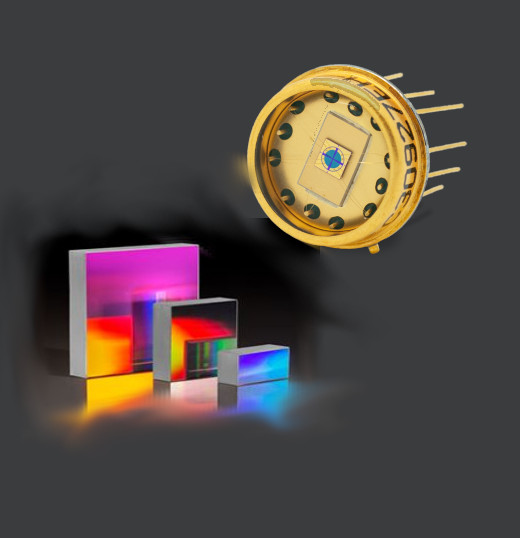
The Benefits of Spectrometer Wavelength Calibration
Spectrometers are exposed to temperature changes and other conditions affecting performance. Wavelength calibration is recommended to correct for drift and similar phenomena inherent to all spectrometers.
Spectrometers are complex optoelectronic devices that require careful mechanical, electronic and optical design to assure their long-term service, reliability and performance. Also, spectrometers will experience changes in temperature and pressure, and undergo mechanical stress and optical decay, that can affect performance. Even though each spectrometer is calibrated carefully before it leaves Ocean Optics, it will drift slightly as a function of time and environmental conditions.
The good news? As we’ll outline in this technical tip, routine spectrometer wavelength calibration can resolve potential performance issues and minimize effects that can lead to misleading or incorrect measurement results. Ocean Optics offers various tools and services for reliable spectrometer wavelength calibration.
Background
Proper analytical procedures require the use of standards or reference materials to ensure reliable results. If such monitoring shows the instrument is not performing according to its designed parameters, the instrument needs to be recalibrated to return it to optimum performance – i.e., its status when assembled and shipped from the factory.
In our experience, spectrometer wavelength calibration is warranted in three circumstances:
- To ensure that wavelength drift, thermal cycling and the like do not affect your measurement results. In general, your spectrometer’s calibration is stable over time because the spectrometer has no moving parts. However, anything that affects the physical dimension of the bench can have an effect on calibration, including infrequent, accidental occurrences like dropping the spectrometer. Also, our calibrations are performed at room temperature; any significant departures from room temperature will change the wavelength calibration.
- To optimize spectrometer performance after you’ve changed the slit size. Most Ocean Insight spectrometers have field-replaceable entrance slits. If you change from a standard slit to a slit with a filter, the spectrometer must be recalibrated because the filter changes the optical focus and wavelength calibration of the spectrometer. (Slit-with-filter changes must be performed at Ocean Insight.) Also, recalibration is necessary when changing from a larger slit to a smaller slit. But recalibration is optional when changing from a smaller slit to a larger one, although we still recommend that a calibration be performed to ensure best performance.
- To ensure the accuracy of the radiometric calibration of a spectrometer. Before you can radiometrically calibrate a spectrometer, you first need to perform a wavelength calibration. Indeed, this is now standard practice for all radiometric calibrations that Ocean Insight performs in its ISO/IEC 17025:2017-certified lab.
Wavelength Calibration Tools
With spectrometers, wavelength recalibration requires the use of a reference light source that emits well-defined wavelengths. Resulting from atomic level transitions, these emission lines are intrinsic to the source and considered primary standards, requiring no calibration themselves. Examples include gas-discharge mercury and argon vapor lamps with intense, narrow (accurate to within 0.001 nm) and well-identified emission bands that cover various UV, Visible and NIR spectral ranges. Their high level of accuracy and reliability make these lamps ideal for procedures ranging from routine checks of instrument performance to total recalibration of a spectrometer.
Ocean Insight wavelength calibration sources are available in configurations that span the UV to the NIR. These sources have convenient battery options, remote on/off, and LED indicators for battery charge and lamp activation.
Options include mercury-argon (253-1700 nm), krypton (427-893 nm), neon (540-754 nm), argon (696-1704 nm) and xenon (916-1984 nm) gas-discharge emission sources. With multiple wavelength options and emission lines to utilize, users can more readily choose a source, or combination of sources, to match wavelengths of interest within the measurement range.
Wavelength Calibration Practices
You can have Ocean Insight perform an in-house calibration (referred to as a WAVECAL and processed as an RMA) on your spectrometer or you can perform the calibration using one of the calibration sources described above.
A more convenient option for some folks – especially if you need to recalibrate often – is to invest in a spectrometer wavelength calibration source and perform the calibration in the lab or field.
Also, every spectrometer we ship includes a sheet listing its wavelength calibration coefficients (four floating-point values that can be used to derive the wavelength associated with each pixel on the detector), as well as a summary of the spectral lines (from mercury, argon, xenon, neon and other calibrated line sources) used to generate those coefficients.
To complement that information, an EEPROM flash memory chip in each spectrometer contains wavelength calibration coefficients, linearity coefficients, and a serial number unique to each spectrometer. The spectroscopy application reads these values directly from the spectrometer, enabling the ability to “hot-swap” spectrometers between computers without entering the spectrometer coefficients manually on each computer.
Summary
For a relatively modest investment, adding an Ocean Insight wavelength calibration source is the perfect add-on for your spectrometer setup. What's more, wavelength calibration sources are conveniently available for purchase online.
Usłyszane w sieci
Rzeczą ważniejszą od wiedzy jest wyobraźnia.
Albert Einstein






